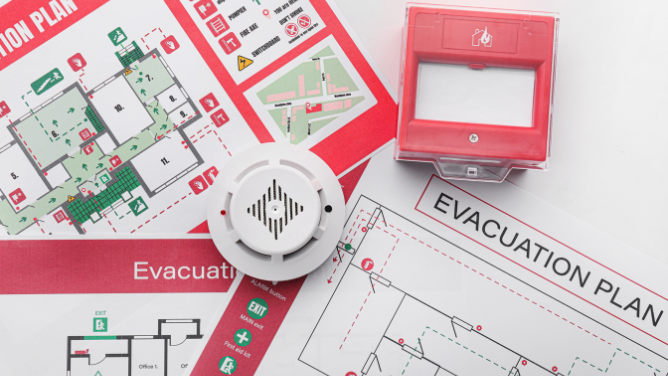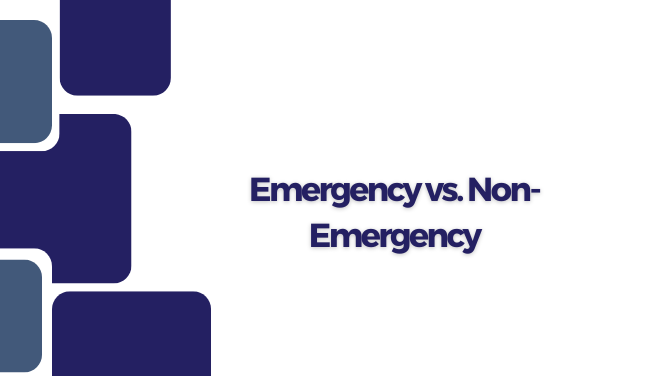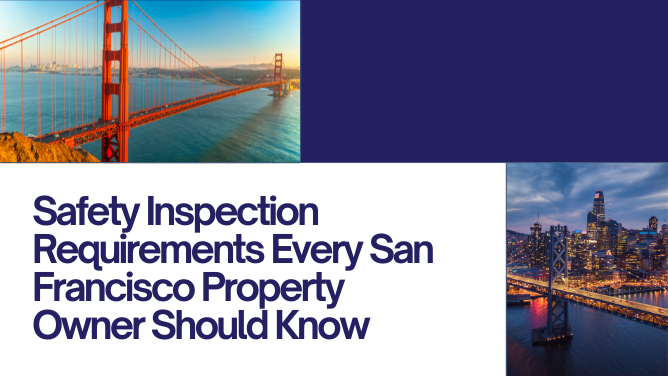Preparing for Emergencies
Emergencies can strike at any time, and as a property owner or manager in the Bay Area, being prepared is crucial to safeguarding your rental units and ensuring the safety of your tenants. From natural disasters like earthquakes and wildfires to human-made crises such as power outages and security threats, having a comprehensive emergency preparedness plan is essential. Here’s how to create a robust crisis management plan tailored to the unique challenges of the Bay Area.

Risk Assessment and Prioritization
Begin by identifying potential risks specific to the Bay Area. This includes natural disasters like earthquakes, fires, severe storms, and flooding, as well as emergencies such as power outages, gas leaks, and security breaches. Conduct a thorough risk assessment and property inspection for each property, considering the location, building structure, and historical data on past incidents. Use a checklist to prioritize these risks based on their likelihood and potential impact.
Developing an Emergency Response Plan
Once risks are identified, develop a detailed emergency response plan. This plan should outline specific actions to take before, during, and after an emergency. Key components of the plan include:
- Evacuation Procedures: Clearly marked evacuation routes and assembly points. Ensure all tenants are aware of these routes and conduct regular evacuation drills.
- Communication Plan: Establish a communication protocol for informing tenants about emergencies. This can include text alerts, emails, and social media updates. Ensure you have updated contact information for all tenants.
- Emergency Contacts: A list of important contacts, including local emergency services, utility companies, and property management staff. Make this list easily accessible to tenants.
- First Aid and Medical Assistance: Ensure that first aid kits are readily available so tenants can prompt attention to wounds, burns, or other injuries to prevent conditions from worsening and reduce the risk of complications.
Preparation and Mitigation Strategies
Preparation is key to minimizing the impact of emergencies. Implement the following strategies:
- Structural Safety: Regularly inspect buildings for structural integrity and make necessary upgrades to withstand earthquakes and other natural disasters. This may include retrofitting older buildings to meet current seismic standards.
- Fire Safety: Install and maintain smoke detectors, fire alarms, and sprinkler systems. Create defensible space around properties to reduce wildfire risk.
- Utility Management: Ensure gas, water, and electrical systems are properly maintained. Have shutoff valves clearly marked and accessible.
Tenant Education and Engagement
Educating tenants about emergency preparedness is crucial. Regularly communicate with tenants about the emergency response plan and provide them with resources to prepare individually. Consider hosting workshops or informational sessions on topics such as:
- Earthquake Preparedness: How to “Drop, Cover, and Hold On” during an earthquake and what to do immediately after.
- Fire Safety: How to use a fire extinguisher and the importance of fire drills.
- Personal Emergency Kits: What to include in a personal emergency kit and how to store it.
Regular Drills and Plan Updates
Conduct regular emergency drills to ensure staff and tenants are familiar with the emergency response plan. These drills should simulate different types of emergencies and provide opportunities to evaluate and improve the plan. Additionally, the plan must be reviewed and updated annually or after any significant incident. Ensure that any changes are communicated to all stakeholders.
Insurance and Financial Preparedness
Ensure that your properties are adequately insured against potential risks. This includes policies covering natural disasters, liability, and property damage. Review your insurance coverage regularly and make adjustments as needed. An emergency fund should also be established to cover immediate expenses following a crisis.
Post-Emergency Recovery
Have a clear post-emergency recovery plan to address the aftermath of a crisis. This plan should include:
- Damage Assessment: Procedures for assessing and documenting property damage.
- Repairs and Restoration: A list of pre-vetted contractors and service providers who can quickly respond to repair needs.
- Tenant Support: Resources and assistance for tenants displaced or affected by the emergency.

Creating a comprehensive crisis management plan for your Bay Area properties is essential for ensuring swift and effective responses to emergencies. By conducting thorough risk assessments, developing detailed response plans, engaging with tenants, and regularly reviewing and updating your strategies, you can significantly mitigate the impact of crises on your properties and enhance the safety and well-being of your tenants. Proactive preparedness protects your investment and fosters a sense of security and community among your tenants. For more depth, check out this video featuring BanCal's Kelli Smith for valuable insights on executing organized and productive emergency preparedness.
Is your property ready for the unexpected? At BanCal, we understand the value of your property and the importance of being prepared for emergencies. Contact us today to learn more about our expert services and how we can help protect your investment and foster a secure community.








